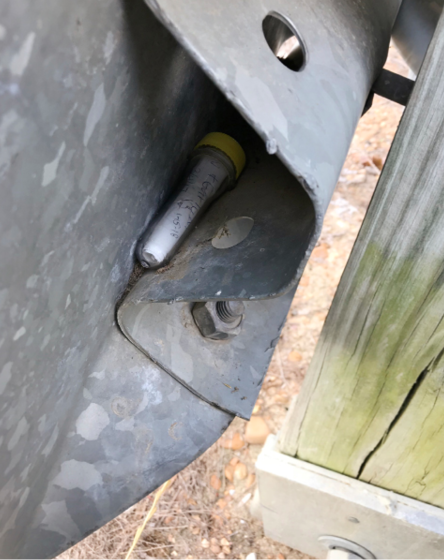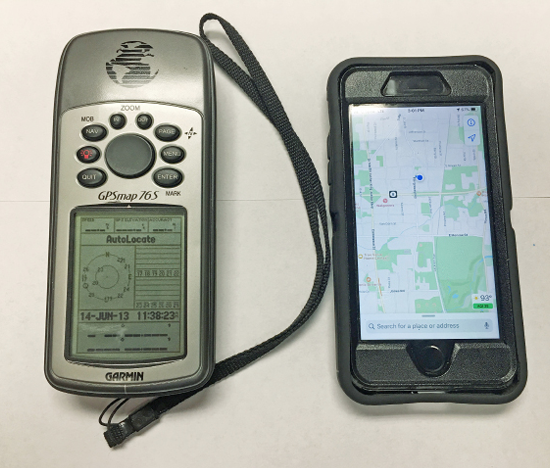Geocaching in Natural Resources: Fun with Forests around Us
Adults often find themselves at a loss when trying to encourage younger generations to take up outdoor pastimes. The allure of electronic technology and team sports, combined with parents’ busy schedules, sometimes makes it hard for children to participate in traditional outdoor activities. The good news is that there are still many opportunities to get young people interested in the outdoors. Geocaching is a fun outdoor activity for children and adults. The game is educational and fun and encourages young people to spend time in nature.
Geocaching is an outdoor treasure-hunting game that is a lot like a scavenger hunt. The game uses GPS technology to guide players to locations where individual geocaches are hidden. Players use clues to search for the geocache. You can find or create geocaches with forest, wildlife, and other natural resource themes and share your experiences online in the geocaching community. The overall goal is to guide people to places of significance where they can learn something about that particular location or topic.


What Is GPS?
Global Positioning System (GPS) is a global satellite-based navigation system owned and operated by the United States government, but private citizens can use them, too. The system provides location and time information to a GPS receiver from anywhere with an unobstructed line of sight to GPS satellites. When functioning correctly, these devices can pinpoint the user’s location anywhere on the planet to within 8–20 feet (upgraded GPS units are accurate to less than 1 foot). They are used to navigate from place to place or mark a specific point for relocation later.
GPS receivers are relatively user-friendly, and learning how to use them for the geocaching game is not difficult. But if you need help, several tutorials are available online. You can use handheld GPS units for geocaching (they can simplify some of the more complicated searching techniques in some cases), but most geocachers use GPS-enabled smartphones to play. In this publication, we will focus on using smartphones to play the game.

So How Do You Geocache?
The first step to geocaching is registering as a member with a unique username and password. Basic membership registration is free and allows you to access non-premium geocaches and navigate using online app mapping. Premium membership costs about $30 per year and gives you location and description information for all caches as well as other tools. You can find registration instructions for both membership options at www.geocaching.com.
Once you’re registered, the map function in the geocaching app will show your current location. You will see nearby geocaches and their information, such as cache description, difficulty and terrain rating, size, recent cache activity, and hints to help in the search. At this point, you can select caches that follow a selected theme, such as geological information, forestry, wildlife, plant identification, or anything else you’re interested in. If you have a premium membership, you can find geocaches that provide learning opportunities.
Next, select a cache to find and use the GPS to begin searching. There are different types of geocaches, and some contain items you can trade. Every geocache should contain a logbook. After locating the cache, sign the logbook and return the geocache to its original location.
What Are the Rules?
Like all games, geocaching has rules you should follow. They are very simple.
- Only take something from the geocache if you leave something in return. The item you leave as a trade should be of equal or greater value. For example: An appropriate trade for a toy car would be a toy airplane or a keychain. Remember, if you don’t leave anything for the next player, the game is not as fun for them. Never leave inappropriate items in geocaches.
- Sign the logbook.
- Log the visit in the app.

Where Are Geocaches Located?
Geocaches are located all over the world! According to www.geocaching.com, there are more than 3 million active geocaches spread across 191 countries on all seven continents. Over 1.3 million of these are hidden across North America, and tens of thousands are in Mississippi. Caches are hidden in parks, along hiking trails, on street signs, beside roads, on/in/under bridges, in cemeteries, around businesses and historical sites, underwater, and in lots of other places. Cache owners often hide geocaches in places that are interesting or have a special meaning to them. This is part of what makes the game so interesting and exciting.

What Types of Geocaches Are There?
There are 16 different types of geocaches. These are the four primary cache types:
- Traditional Geocache: This is the original cache type and most straightforward. It includes a container at given coordinates and a logbook. May have items for trade (often called SWAG).
- Mystery or Puzzle Caches: Solve the mystery or puzzle to reveal the correct coordinates. These are sometimes very complicated.
- Multi-Cache: A cache with two or more “stages.” The final location has a container with a logbook inside. Find the first stage and you get a clue to the second stage, and so on.
- EarthCache: Perhaps one of the most educational caches when it comes to learning about natural resources. These caches focus on a special location people can visit to learn about a unique feature of the earth. EarthCache pages include a set of educational notes along with coordinates. You can learn how geological processes have shaped the land, how natural resources are managed, and how scientists gather evidence. Typically, you send answers to questions to the cache owner after observing whatever is at the actual location.
Additional cache types (Letterbox Hybrids, Event Caches, Cache In Trash Out caches, Mega- and Giga-Event caches, Wherigo caches, virtual caches, webcam caches, and several others) can be found in smaller numbers across the region, as well.
Getting Started
What kind of geocache am I looking at?
Several important pieces of information are included on each geocache page. At the top of the page, you’ll find the cache name, identification number, and type. You will also find the cache difficulty and terrain rating, size, and a basic description of what you can expect to learn and experience while searching for the cache. The cache owner can also give searching hints for cachers, and usually you’ll see the last known cache activity.
Once you choose the geocache you want to search for, click the navigate button and follow your phone’s GPS to the geocache’s general area. At this point, you’ll use the clues in the description and hint box, plus your observational skills, to find the cache’s actual hiding place. When you find it, sign the cache log and select the log option in the app to document your experience.

What does a geocache look like?
Geocaches can vary drastically in size and appearance, ranging from large plastic containers to fake rocks or false bolt heads to surplus military ammunition cans. Some caches are very obvious and easy to see, while others are well-camouflaged and hard to find. There are five cache sizes that give you a general idea of what size container to look for.






How can I use geocaching as a natural resources educational tool?
Compared to older generations, today’s youth are increasingly less acquainted with forestry and wildlife management techniques, and they lack a general awareness of the natural world and our environment. However, young people need to know about these systems so they can contribute to the sustainable management and conservation of our natural resources. Young people need to understand and experience nature in a personalized, outdoor setting. Geocaching helps children learn about natural resources while having fun.
One option is to select individual caches with a theme that matches your topic of interest. Here are some examples:
- an EarthCache with geological information
- a cache with information about a forest management practice
- a cache that asks you to identify a species of plant
- a cache that provides information regarding local wildlife
These caches are relatively common and are often found in parks, national forests, wildlife management areas, and similar places.
Another great option for natural resources education is a themed tour, which is an established geocaching route. While these may seem like they would be hard to find, areas of urban/rural interface often have some pre-existing routes that can fill this role.
Alternatively, you or another person with knowledge about a subject can create a customized route that fills the educational need of a desired topic. This is simpler than you might think. Choose a centralized theme and create individual caches that provide specific points of information along the route. You do need to understand the game and be familiar with the topics you plan to highlight along the route.
Adults and youth alike enjoy geocaching, so this can be a great way to deliver natural resources instruction. Through geocaching, you can reach youth who may not be interested in other educational methods. The game can provide environmental knowledge in a manner that is both entertaining and educational.
The information given here is for educational purposes only. References to commercial products, trade names, or suppliers are made with the understanding that no endorsement is implied and that no discrimination against other products or suppliers is intended.
Publication 3508 (POD-09-23)
By A. Brady Self, PhD, Associate Extension Professor, Forestry; and Keryn B. Page, Publications Manager, Agricultural Communications.
The Mississippi State University Extension Service is working to ensure all web content is accessible to all users. If you need assistance accessing any of our content, please email the webteam or call 662-325-2262.






